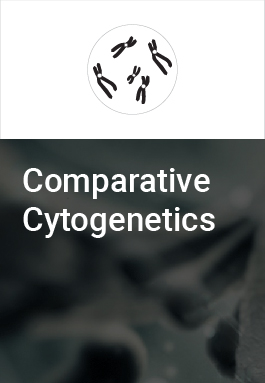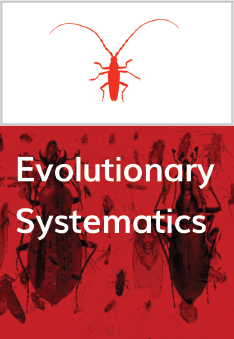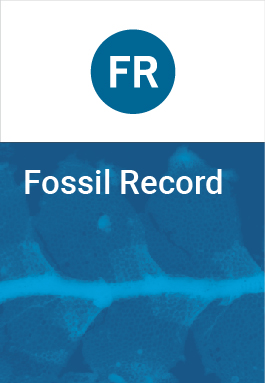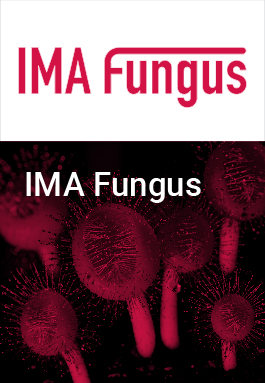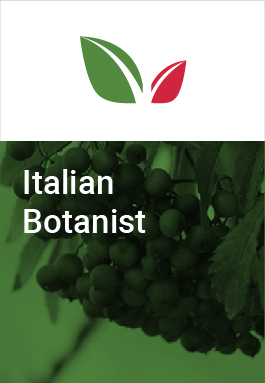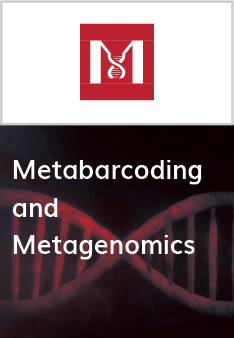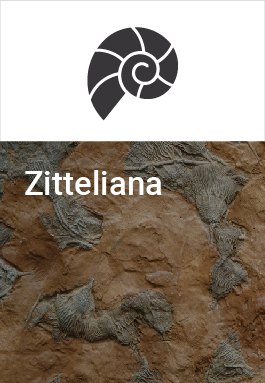Browse Journals
JOURNALS
ACTA ICHTHYOLOGICA ET PISCATORIA (AIeP) is an international, peer-reviewed scientific journal that publishes articles based on original experimental data or experimental methods, or new analyses of already existing data, in any aspect of ichthyology and fisheries (fin-fish and shell-fish).
ACTA ICHTHYOLOGICA ET PISCATORIA (AIeP) is an international, peer-reviewed scientific journal that publishes articles based on original experimental data or experimental methods, or new analyses of already existing data, in any aspect of ichthyology and fisheries (fin-fish and shell-fish).
Q3: Zoology
Advances in Pollinator Research (APR) is an international peer-reviewed, open access online journal aiming to become a transdisciplinary, community-born platform for the dissemination of knowledge addressing current challenges in pollinator science.
Advances in Pollinator Research (APR) is an international peer-reviewed, open access online journal. Established to facilitate the dissemination of original scientific results and innovative research ideas, APR aims to become a transdisciplinary, community-born platform for the exchange of ground-breaking knowledge addressing current challenges in pollinator science.
APR publishes research articles, opinion papers, short notes and reviews focused on pollinators as model species. The topics covered include pollinator health, drivers of pollinator declines, pollinator conservation, molecular ecology of pollinators, pollination ecology, socio-economics and decision support for policy-making. We look forward to receiving your submissions.
Published jointly by the KwaZulu-Natal Museum and Pensoft, the journal covers the taxonomy, systematics, biology, biogeography, ecology, conservation and palaeontology of Afrotropical invertebrates.
African Invertebrates is an international peer-reviewed journal that covers the taxonomy, systematics, biology, biogeography, ecology, conservation and palaeontology of Afrotropical invertebrates, whether terrestrial, freshwater or marine, published jointly by the Council of the KwaZulu-Natal Museum and Pensoft Publishers. A printed version of the journal is produced twice a year. All contributions are published in English (British Standard), with an option to add an abstract in any other language that uses Latin or Cyrillic alphabet. When preparing manuscripts, authors are encouraged to make use of extensive holdings of the KwaZulu-Natal Museum and other South African museums and collections, and to deposit holotypes (paratypes) and voucher specimens in recognised South African institutions.
Q4: Paleontology
Q3: Zoology
Q2: Animal Science and Zoology
Q2: Paleontology
Q2: Ecology, Evolution, Behavior and Systematics
Formerly the “Journal of the Swiss Entomological Society”, the journal focuses on insects and occasionally other arthropods from mountainous regions from around the world.
Alpine Entomology
Alpine Entomology, advancing insect science in mountain regions worldwide, publishes original research articles, reviews and short communications on insects and other arthropods from mountainous regions all over the world. Published articles may cover a diversity of topics, including taxonomy, phylogenetics, behavior, ecology, conservation and biogeography, provided that article content enhances current understanding of entomological fauna in mountainous areas. Studies using altitudinal gradients to investigate community structure and ecosystem processes anywhere across the globe are welcome. Upon request, larger monographs or special issues may also be published.
Alpine Entomology, in print since 2017, is the journal of the Swiss Entomological Society (formerly the “Journal of the Swiss Entomological Society”, published from 1862 to 2016). Alpine Entomology is an open access journal, available both online and in print. The journal primarily publishes papers in English; however, manuscripts in German, French and Italian are also welcome, provided that they contain an English translation of the abstract. Members of the Swiss Entomological Society receive a printed copy of the year’s volume.
You can find previous volumes of the journal here.
Q3: Agricultural and Biological Sciences: Insect Science
Q3: Animal Science and Zoology
Q3: Environmental Science: Ecology
ARPHA Conference Abstracts is a novel, open access, human- and machine-readable platform designed to assist conference organisers in authoring, submission, peer review, editorial management, publication and dissemination of conference abstracts in any field of science, published with DOI in semantic HTML, XML and PDF.
ARPHA Conference Abstracts (ACA) is a novel, open access, human- and machine-readable platform designed to assist conference organisers and participants in authoring, submission, peer review, editorial management, publication and dissemination of conference abstracts in any field of science, published with DOI in semantic HTML, XML and PDF formats.
ARPHA Conference Abstracts allows for innovative publication of extended abstracts that may in addition to the narrative include also data, images, videos and multimedia. Video recordings of conference talks or graphic files of poster presentations can be uploaded in bulk after the conference and visualized on each abstract page. Conference organisers are given the opportunity to subdivide their abstract collections by different symposia, workshops or sections, managed and edited by their respective conveners.
ARPHA Conference Abstracts is powered by the ARPHA journal publishing platform, which is the first workflow to support the full life cycle of a manuscript, from writing through submission, peer review, publication, dissemination and archiving within a single online collaborative environment.
ARPHA Proceedings is a novel, open access, human- and machine-readable platform designed to assist conference organisers in authoring, submission, peer review, editorial management, publication and dissemination of conference proceedings in any field of science, published with DOI in semantic HTML, XML and PDF.
ARPHA Proceedings is a novel, open access, human- and machine-readable platform designed to assist conference organisers in authoring, submission, peer review, editorial management, publication and dissemination of conference proceedings in any field of science, published with DOI in semantic HTML, XML and PDF.
ARPHA Proceedings allows for innovative publication of extended proceedings that may include figures, citations and data. Video recordings, posters and presentations can be uploaded in bulk after the conference.
ARPHA Proceedings is supported by the ARPHA journal publishing platform, which is the first workflow to support the full life cycle of a manuscript, from writing through submission, peer review, publication, dissemination and archiving within a single online collaborative environment.
Designed to accelerate publishing, dissemination and sharing of biodiversity data, this journal is the first to offer integrated publication of narrative and data within the article content.
Biodiversity Data Journal (BDJ) is a community peer-reviewed, open access journal, designed to accelerate publishing, dissemination and sharing of biodiversity-related data of any kind. All structural elements of the articles – text, morphological descriptions, occurrences, data tables, etc. – are treated and stored as data.
The journal publishes papers in biodiversity science containing taxonomic, floristic/faunistic, morphological, genomic, phylogenetic, ecological or environmental data on any taxon of any geological age from any part of the world. BDJ aims at integrating data and narrative in the article content to the maximum extent possible. Supplementary data files that underpin graphs, hypotheses and results should also be published with the article or deposited in trusted open access data repositories. The journal provides rich biodiversity data import and export facilities through the ARPHA Writing Tool and Darwin Core Archives.
Q3: Ecology, Evolution, Behavior and Systematics
Q2: Agricultural and Biological Sciences
Q2: Animal Science and Zoology
Q3: Insect Science
Q2: Plant Science
Created for Biodiversity Information Standards (TDWG), this innovative journal publishes conference abstracts meant for presentation at the annual meetings.
Biodiversity Information Science and Standards (BISS) is an innovative open access journal publishing abstracts related to biodiversity standards, methods, guidelines, models and applications in biodiversity informatics submitted to Biodiversity Information Standards (TDWG) for presentation at annual meetings.
The journal also publishes conventional research articles. They will only be considered if they illustrate the development or application of new methods and approaches in biodiversity informatics in the form of case studies.
Biodiversity Information Science and Standards is published on the ARPHA journal publishing platform, which is the first workflow to support the full life cycle of a manuscript, from writing through submission, peer review, publication and dissemination within a single online collaborative platform.
Created to accelerate research in ecology and biodiversity, the journal covers a wide range of topics: Evolutionary Ecology, Conservation Biology, Ecosystems and others.
BioRisk is a peer-reviewed, open access, online and print, rapidly published journal in ecology and biodiversity science. The journal will consider for publication manuscripts dealing with the following topics: Species, Ecosystems & Conservation, Populations & Communities, Behavioural Ecology, Habitats, Ecosystems & Natural Spaces, Biogeography & Macroecology, Evolutionary Ecology, Conservation Biology, Ecosystem & Biodiversity Services, Biological Invasions, Biodiversity Risk Assessment, Environmental Ecology, Climate Change, Landscape Ecology, Land Use change, Marine & Freshwater Ecology, Agricultural Ecology, Urban Ecology, Restoration Ecology, and others.
Q3: Agricultural and Biological Sciences
Q3: Ecology
Q3: Animal Science and Zoology
Q3: Insect Science
Q3: Plant Science
Q3: Ecology, Evolution, Behavior and Systematics
Bulgarian Cardiology is a peer-reviewed, open access journal first published in 1995 as a scientific body of the Society of Cardiologists in Bulgaria.
Bulgarian Cardiology is a peer-reviewed, open access journal first published in 1995 as a scientific body of the Bulgarian Society of Cardiology. It is co-published by the Bulgarian Society of Cardiology and Pensoft Publishers.
Since its launch the journal has been an important forum of the cardiological community in Bulgaria. Scientific achievements of Bulgarian medical specialists, important practical guidelines of the European Cardiology Society and other scientific publications are published. The high quality of scientific output is the journal’s priority.
Q4: Medicine (miscellaneous)
Bulletin of Insectology is peer-reviewed scientific journal that publishes articles on insects and other arthropods with special focus on agricultural and forestry entomology.
Bulletin of Insectology is an international scientific journal that publishes original articles since 1928 mainly on morphology, biology, behaviour and physiology of insects and other arthropods; control of insects, mites and other arthropod pests with particular reference to biocontrol and integrated pest management.
Caucasiana is a double-blind peer-reviewed, open access and free-of-charge scientific journal that is dedicated to enhance biodiversity research/publication in Caucasus biodiversity hot-spot and adjacent areas.
Caucasiana is an international peer-reviewed, open-access, and free-of-charge online journal that covers all research branches related to biodiversity in the Caucasus region and adjacent areas. Thanks to an effort made by Ilia State University (Georgia) and Pensoft Publishers, the Caucasiana was launched in 2022 in order to widen and enhance biodiversity research and publishing in the poorly studied Caucasus biodiversity hotspot. While there is no bias with regards to the branches of biodiversity sciences or manuscript size, the journal only considers manuscripts related to the biodiversity of the Caucasus and adjacent areas, given sufficient novelty and high quality of research.
Research articles, Review Articles, Short communications, Data papers, Forum papers, Monographs
Established to cater to the needs of biodiversity conservation, the journal publishes papers on the geographic distribution of species and higher taxonomic groups.
Check List is a peer-reviewed, open access, on-line journal devoted to publishing Notes on Geographic Distribution of one or a few species, and Distribution Summary of a taxonomic group. These data are essential for studies on biogeography and provide a baseline for the conservation of biodiversity as a whole. The first step to undertaking effective conservation action is to understand species’ geographic distribution. Check List was established to cater to this need by publishing papers on the geographic distribution of species and higher taxonomic groups.
Q4: Zoology
Q3: Ecology, Evolution, Behavior and Systematics
Q3: Animal Science and Zoology
Q3: Insect Science
Q3: Plant Science
Climate, Atmosphere, and Water Research (CAWR) embraces basic and applied, as well as theoretical and empirical research, as theory and models must emerge from real situations and provide answers that can support mitigation and management decisions.
Climate, Atmosphere, and Water Research (CAWR) is an international, peer-reviewed scientific journal that publishes articles based on original data and theoretical studies of the climate system with a focus on global, regional, and local climates; water resources; societal challenges related to climate change.
This journal publishes original research on all aspects of plant, fungal and animal cytogenetics, karyosystematics, molecular systematics and genomics.
Comparative Cytogenetics is a peer-reviewed, open access, online journal, launched to accelerate research on all aspects of plant, fungal and animal cytogenetics, and genomics. It publishes articles of high scientific quality reporting comprehensive research on descriptions and photos of karyotypes, characteristics of mitosis and meiosis, mechanisms of sex determination, reproductive biology, gametogenesis, molecular systematics, comparative genomics, and taxonomic conclusions.
Q3: Plant Sciences
Q3: Zoology
Q3: Biotechnology
Q4: Genetics
Q3: Plant Science
Q3: Insect Science
Research Papers, Review Papers, Forum Papers, Data Papers, Software Descriptions, Editorials, Correspondences, Corrigenda, Monographs
Back issues of volume 1 to 3 (2007-2009) are available here
Among the World’s oldest titles of systematic Entomology, this journal focuses on the systematics, taxonomy, phylogeny and comparative morphology, and biogeography of insects.
Founded in 1857 as Berliner Entomologische Zeitschrift, Deutsche Entomologische Zeitschrift (DEZ) is one of the World’s oldest international journals in systematic Entomology. It publishes original research papers in English on the systematics, taxonomy, phylogeny, comparative morphology, and biogeography of insects. Other arthropods are also considered where of relevance to the biology of insects. The geographical scope of the journal is worldwide. Deutsche Entomologische Zeitschrift is dedicated to provide an open access, high-quality forum to contribute to the documentation of insect species, their distribution, their properties, and their phylogenetic relationships. All submitted manuscripts are subject to peer-review by the leading specialists for the respective topic. The journal is published in open access high-resolution PDF, semantically enriched HTML and machine-readable XML versions.
The Estuarine Management and Technologies initiative aims to facilitate the electronic publication of peer-reviewed papers covering diverse aspects of estuarine systems. The focus includes topics within the realms of physics, chemistry, geology, biology, and hydrology. This platform provides an avenue for researchers to share insights and advancements related to the technologies associated with estuarine management.
Estuarine Management and Technologies is designed to concentrate on the technological facets of researching, managing, and preserving estuarine environments. This encompasses environmental monitoring utilizing advanced technologies, hydrodynamic modeling for comprehending water flow, innovations in habitat restoration, strategies for adapting to climate change, sustainable bio-resource management, and technological solutions for effective policy and governance. The program underscores the interdisciplinary nature of estuarine research, integrating expertise from fields such as biology, ecology, hydrology, engineering, and chemistry.
Research Article, Review Article, Short Communication, Data Paper, Software Description, Editorial, Corrigendum, Methods & Technologies; Estuarine Scientists; Expert View; Video Paper in 180s; Rapid Communication; Mini-Review; Education & Communication
Edited by the Leibniz Institut zur Analyse des Biodiversitätswandels, this life science journal focuses on whole-organism biology and collection-related research.
EVOLUTIONARY SYSTEMATICS
An International Journal of Collection-based Research
Evolutionary Systematics (formerly Mitteilungen aus dem Hamburgischen Zoologischen Museum und Institut), edited and co-published by the Leibniz Institute for the Analysis of Biodiversity Change and Pensoft Publishers is an international, peer-reviewed, life science journal, devoted to whole-organism biology. It mainly publishes original research and review articles in the field of metazoan taxonomy, biosystematics, evolution, morphology, development and biogeography at all taxonomic levels. Its scope encompasses primary information from collection-related research, for example taxonomic descriptions and discoveries, revisions, annotated type catalogues, aspects of the history of science, and contributions on new methods and principles of systematics. Articles whose main topic is ecology, functional anatomy, physiology, or ethology are only acceptable when of clear systematic or evolutionary relevance and perspective. Review articles and contributions to a discussion forum are welcome, but authors are asked to contact the editors beforehand.
Q2: Ecology, Evolution, Behavior and Systematics
Q2: Insect Science
Research article, Review article, Editorial, Corrigendum
Folia Medica is a peer-reviewed interdisciplinary medical journal, published quarterly by the Medical University of Plovdiv. Paper-based at the beginning, it is now available also in an electronic version. Issued exclusively in English, Folia Medica.
Folia Medica is a peer-reviewed interdisciplinary medical journal, co-published bimonthly by the Medical University of Plovdiv and Pensoft Publishers. Paper-based at the beginning, it is now available also in an electronic version. Issued exclusively in English, Folia Medica. Received manuscripts are accepted for publication only after they have been rigorously reviewed by independent experts in the respective fields, the reviewers remaining anonymous to the authors. The journal is published under the strict supervision of an Editorial Board.
The journal accepts manuscripts in the following fields: medicine, dental medicine, pharmaceutics, public health and health care. Priority topics include: integrative biology, experimental medicine, clinical and therapeutic aspects of socially significant diseases (cardiovascular diseases, cerebrovascular diseases, diabetes mellitus, neoplastic disorders, etc.), dentistry, public health, ecology and health.
Supplement, Original Article, Review, Case report, Letter to the Editor
Back volumes are available here.
Food and Ecological Systems Modelling Journal (FESMJ) is an innovative open access journal which facilitates the publication of mathematical models, datasets and software solutions in the areas of Agriculture, Food, Social-Ecological Interactions, Bioeconomy, Natural Resources and Environmental Sciences.
Food and Ecological Systems Modelling Journal (FESMJ) is an innovative open access journal which facilitates the publication of mathematical models, datasets and software solutions in the areas of Agriculture, Food, Social-Ecological Interactions, Bioeconomy, Natural Resources and Environmental Sciences. The journal focuses on submissions documenting the following outcomes of the research cycle: data, models, model validation studies, software, data analytics pipelines and visualisation methods.
Food and Ecological Systems Modelling Journal (FESMJ), ISSN 2815-3197 is a replacement title for and continuation of the Food Modelling Journal (FMJ), ISSN 2603-4301, published from 2019 to 2021. All content of the journal under its previous and current titles is available through the present website.
This journal of the Museum für Naturkunde Berlin publishes studies in all areas of palaeontology including taxonomy and systematics of all fossil organisms, biostratigraphy, palaeoecology, palaeobiology, and evolution.
Fossil Record is the international, peer-reviewed palaeontological journal of the Museum für Naturkunde Berlin. It publishes original papers about all taxonomic groups and in all areas of palaeontology including the taxonomy and systematics of fossil organisms, biostratigraphy, palaeoecology, and evolution. Fossil Record publishes specimen-based research if the results are placed in a wider context or analysis being relevant for a wider audience and particularly encourages publication of studies applying analytical methods in the field of palaeobiology.
Frontiers of Biogeography is a peer-reviewed, open-access, rapidly disseminated journal launched to accelerate research and information exchange in biogeography.
Launched to support biogeographic research
Frontiers of Biogeography (FoB) is the scientific journal of The International Biogeography Society (TIBS, biogeography.org), a not-for-profit organization dedicated to the promotion, and public understanding, of the biogeographical sciences. TIBS launched FoB in 2009 to provide an independent forum for biogeographical science, with the academic standards expected of a journal operated by and for an academic society.
Q1: Ecology, Evolution, Behavior and Systematics
Q2: Global and Planetary Change
Back issues are available here
Herpetozoa is a scientific journal of the Austrian Herpetological Society (ÖGH). The journal is devoted to all aspects of herpetology.
Herpetozoa is the international peer-reviewed open access journal of the Austrian Herpetological Society (ÖGH, Österreichische Gesellschaft für Herpetologie).
Herpetozoa publishes original research articles, short contributions and reviews covering all aspects of the study of amphibians and reptiles. All contributions should be written in English, a German abstract may also be included. A printed version of the journal will be produced in annual volumes.
You can find previous volumes of Herpetozoa here.
Q2: Ecology, Evolution, Behavior and Systematics
IMA Fungus, founded in 2010, is the flagship journal of the International Mycological Association (IMA).
The IMA represents the interests of mycology and mycologists worldwide, through a series of regional and national organizations, and is responsible for the International Mycological Congresses (IMCs). The journal considers contributions from all areas of mycology expected to be of interest to the wider mycological community, from basic research to applications.
IMA Fungus is mandated as the journal in which formal proposals relating to the rules on the naming of fungi or protected lists of names are to be published.
IMA Fungus, founded in 2010, is the flagship journal of the International Mycological Association (IMA).
The IMA represents the interests of mycology and mycologists worldwide, through a series of regional and national organizations, and is responsible for the International Mycological Congresses (IMCs). The journal considers contributions from all areas of mycology expected to be of interest to the wider mycological community, from basic research to applications.
IMA Fungus is mandated as the journal in which formal proposals relating to the rules on the naming of fungi or protected lists of names are to be published.
Back issues are available here
Understanding and predicting how ecological systems will respond to rapidly changing and novel conditions is a key task of modern ecology. Individual-based Ecology (IBE) embraces basic and applied, as well as empirical and theoretical research, as theory and models must emerge from real situations and provide answers that can support mitigation and management decisions. IBE, therefore, invites theoretical and empirical contributions that incorporate data or novel insights about individual organisms and their interactions that are relevant for explaining system-level dynamics and responses to ongoing and accelerating change.
Understanding and predicting how ecological systems will respond to rapidly changing and novel conditions is a key task of modern ecology. Individual-based Ecology (IBE) embraces basic and applied, as well as empirical and theoretical research, as theory and models must emerge from real situations and provide answers that can support mitigation and management decisions. IBE, therefore, invites theoretical and empirical contributions that incorporate data or novel insights about individual organisms and their interactions that are relevant for explaining system-level dynamics and responses to ongoing and accelerating change.
Innovations in Agriculture is an international, peer-reviewed and gold open-access journal which publishes articles in all fields of Agricultural Science.
Innovations in Agriculture publish articles in different fields of innovative agriculture, that may include but not limited to the different fields of agricultural sciences like economics, engineering, agronomy, plant science, horticulture, breeding, irrigation and soil science, animal husbandry, poultry and aquaculture.
Covering all fields of botany in its wider sense, including mycology, this journal of the Italian Botanical Society welcomes research ranging from molecular to ecosystem studies.
Italian Botanist is an open access, peer-reviewed journal of the Italian Botanical Society (www.societabotanicaitaliana.it). It was founded in 1969 as Informatore Botanico Italiano to mainly publish proceedings of the Society, alongside book reviews. As submissions and publication types increased throughout the years, in 2015 the Italian Botanical Society moved the journal to Pensoft, with the new name Italian Botanist, in order to publish and disseminate its contents more efficiently. The journal publishes original research covering all fields of Botany in its wider sense, including Mycology, ranging from molecular to ecosystem studies. The geographical coverage of the journal is focused on Italian territories, but studies from other areas are also welcome. The journal is published on behalf of the Società Botanica Italiana onlus.
Back issues (1999-2015) of Informatore Botanico Italiano [ISSN 2421-0404 (online); ISSN 0020-0697 (print)] can be found here
Launched by the International Society of Hymenopterists, this journal focuses on all aspects of the study of Hymenoptera: biology, ecology, systematics, taxonomy, genetics, and morphology.
Journal of Hymenoptera Research publishes papers of high scientific quality reporting comprehensive research on all aspects of Hymenoptera, including biology, behavior, ecology, systematics, taxonomy, genetics, and morphology. Taxonomic papers describing single species are acceptable if the species has economic importance or provides new data on the biology or evolution of the genus or higher taxon. Manuscript length generally should not exceed 50 typed pages; however, no upper limit on length is set for papers of exceptional quality and importance, including taxonomic monographs at generic or higher level.
The journal is published on behalf of the International Society of Hymenopterists (www.hymenopterists.org).
Q2: Ecology, Evolution, Behavior and Systematics
Q1: Animal Science and Zoology
The Orthopterists’ Society’s journal publishes a range of biological research on the insect order Orthoptera as well as Blattodea, Mantodea, Phasmatodea, Grylloblattodea, Mantophasmatodea and Dermaptera.
The Journal of Orthoptera Research (JOR) is the open access, peer-reviewed journal of the Orthopterists’ Society. JOR publishes work on the insect order Orthoptera and its allies, Blattodea, Mantodea, Phasmatodea, Grylloblattodea, Mantophasmatodea and Dermaptera. Its goal is the dissemination of ideas and insights arising from the study of these insects. Papers published cover a range of biological studies of these insects including their diversity, conservation, and the control and management of pest species. Acceptable studies fall within the disciplines of cytology, biological control, morphology, physiology, parasitology, endocrinology, behavior, ecology, systematics, biogeography and taxonomy. The journal encourages comprehensive and synthetic papers and those utilizing modern techniques. Case studies of interesting phenomena are also appropriate, as long as they are contextualized in terms of their significance to orthopterology and entomology in general. Alongside original research, JOR also publishes review articles, short communications, and articles focusing on policy and management of Orthoptera. Two issues are printed annually, and members of the Orthopterists’ Society publish free (excluding color signature fees for images to be printed in color).
 Orthopterists’ Society
Orthopterists’ Society  Orthoptera Species File Online
Orthoptera Species File Online
Q2: Animal Science and Zoology
Q2: Ecology, Evolution, Behavior and Systematics
Innovative journal publishing a wide range of outcomes from across the research cycle concerning metabarcoding and metagenomics from both basic and applied aspects.
Metabarcoding and Metagenomics (MBMG) is an innovative open access online journal which publishes papers on metabarcoding and metagenomics from both basic and applied aspects. The journal welcomes submissions documenting all types of outcomes throughout the research cycle: data, models, methods, workflows, software, perspectives, opinions, and conventional research articles. The journal will consider manuscripts for publication related (but not limited) to the following topics: Environmental MBMG, Microbial MBMG, Applied MBMG (biomonitoring, quarantine, environmental assessment, nature conservation, eDNA, species invasions and others), molecular ecology, DNA-based species delimitation and identification, and other emerging fields related to MBMG. Submissions of bioinformatic approaches to MBMG (algorithms, software) are also encouraged.
The journal is published online only.
Q1: Nature and Landscape Conservation
Q2: Genetics
Q2: Molecular Biology
Q1: Ecology, Evolution, Behavior and Systematics
Q1: Insect Science
Q1: Plant Science
Research Article, Review Article, Forum Paper, Methods, Emerging Technique, Applied Study, Monitoring Schema, Data Paper, R Package, DNA barcode release, Correspondence, Primer Validation, Probe Validation, Software Description, Case Study, Editorial.
Focused on the Kingdom of Fungi, the journal publishes works containing taxonomic or ecological data on any taxon of any geological age from any part of the world.
MycoKeys publishes papers on the monophyletic kingdom Fungi containing taxonomic or ecological data on any taxon of any geological age from any part of the world with no limit to manuscript size.
MycoKeys will consider for publishing: descriptions of new taxa, if they are accompanied with proper diagnoses and/or keys to distinguish them from close relatives or similar taxa, and if DNA sequence data are deposited in Genbank prior to publication; taxonomic revisions of extant (or ‘’recent’’) and fossil fungal groups; checklists and catalogues; phylogenetic and evolutionary analyses, if alignments are deposited in TreeBase; papers in descriptive and/or historical biogeography; methodology papers, including description of new software, if released a open source license and released as supplementary material to the article; data mining and literature surveys; monographs, conspecti, atlases; primer notes; “Points of View” commentaries; collections of papers, Festschrift volumes, conference proceedings; data papers.
Extensive overviews on a taxon in a country or larger region are welcome. Short mycological contributions may be considered if they are based on significant or unexpected discoveries. Regular contributions may eventually be published in special issues devoted to a region/country.
Q1: Plant Science
Q1: Agricultural and Biological Sciences
Natural History Collections and Museomics is peer-reviewed journal for research, discussion and innovation of natural history collections.
Natural History Collections and Museomics is peer-reviewed journal for research, discussion and innovation of natural history collections. Launched to promote exchange of knowledge, ideas and best practices among museum professionals, researchers and enthusiasts. Scientific outputs published in the journal foster a deeper understanding and appreciation of natural history and its impact on society.
The Natural History Collections and Museomics journal is supported by the Consortium of European Taxonomic Facilities (CETAF) and the Integrated Digitized Biocollections (iDigBio).
Launched to cover all aspects of nature conservation, the journal publishes papers across all disciplines interested in basic and applied conservation biology and ecology.
Nature Conservation is a peer-reviewed, open access, rapidly published online journal covering all aspects of nature conservation. The journal publishes papers across all disciplines interested in basic and applied conservation ecology and nature conservation in general at various spatial, temporal and evolutionary scales, from populations to ecosystems and from microorganisms and fungi to higher plants and animals. The journal focuses on ecological, evolutionary, economic, social and other consequences of biodiversity and ecosystem management and the mitigations of negative impacts on them. Nature Conservation also strongly encourages papers on ethical, social, socio-economic, legal and policy issues related to the management and use of biodiversity and ecosystems.
Q2: Ecology, Evolution, Behavior and Systematics
Research Papers, Review Papers, Forum Papers, Data Papers, Software Descriptions, Editorials, Correspondences, Corrigenda, Monographs, Applied Ecology, Conservation in Practice, Short Communications, Letters to the Editor
Publishing across disciplines dealing with biological invasions, the journal accepts papers on the ecology, evolution and biogeography of non-indigenous aquatic and terrestrial species.
NeoBiota is a peer-reviewed, open access, online journal launched to accelerate research on alien species and biological invasions: aquatic and terrestrial, animals, plants, fungi and micro-organisms. The journal is a continuation of the former NEOBIOTA publication series. NeoBiota publishes papers across all disciplines interested in biological invasions, specifically on the ecology, evolution and biogeography of non-indigenous aquatic and terrestrial animals, plants, fungi and micro-organisms, on mechanisms that drive the introduction, establishment and spread of these species, on ecological, evolutionary, economic and other consequences of biological invasions, and on the management of invasions in any part of the world. The journal also strongly encourages papers on ethical, social, legal and policy issues related to biological invasions.
Q1: Ecology
Q1: Aquatic Science
Q1: Ecological Modeling
Q1: Ecology
Q1: Ecology, Evolution, Behavior and Systematics
Q1: Insect Science
Q1: Plant Science
Neotropical Biology and Conservation is an open-access, peer-reviewed, scientific journal. It publishes original research articles on the description, analysis and conservation of the biological diversity with emphasis on the Neotropical region.
Neotropical Biology and Conservation is an open-access, peer-reviewed, scientific journal. It welcomes research on ecology, behaviour, biogeography, evolution, and systematics of all types of Neotropical organisms, either native or introduced, and related environmental aspects. Studies that demonstrate the application of conservation principles for natural resource management and policy are most welcome. Neotropical Biology and Conservation is published four times a year.
Q4: Ecology
Q4: Zoology
Q3: Insect Science
Q3: Animal Science and Zoology
Q3: Plant Science
Q3: Ecology, Evolution, Behavior and Systematics
Published for the Societas Europaea Lepidopterologica (SEL), the journal focuses mainly on the taxonomy, morphology, phylogenetics, biogeography, and ecology of Lepidoptera.
Nota Lepidopterologica is the peer-reviewed journal of the Society for European Lepidopterology (SEL) published by Pensoft. The journal was founded in 1977 and publishes original research papers on taxonomy, morphology/anatomy, phylogenetics, biogeography, ecology, behaviour, conservation, and natural history of Lepidoptera, but also on any other aspects of lepidopterology. The journal is devoted mostly but not exclusively to Palaearctic Lepidoptera. Comprehensive studies in any of the above-mentioned areas are given preference over studies with a very limited scope. However, we also invite short contributions on important topics, such as invasive taxa, new records for large geographical areas, and other similar aspects. All papers are published in English. All submitted manuscripts are subject to peer-review by the leading specialists for the respective topic.
Q3: Ecology, Evolution, Behavior and Systematics
Q3: Insect Science
The journal welcomes both traditional and unconventional research outputs, including data, models, methods and others in all aspects of ecology, environmental sciences, and cross-disciplinary areas of study.
One Ecosystem is an innovative open access scholarly journal which provides a forum for studies in the field of ecology and sustainability. In addition to conventional research papers, the journal welcomes contributions documenting the entire research cycle, including data, models, methods, workflows, results, software, perspectives and policy recommendations. By making research outputs public, the journal will open up new mechanisms for integration of information, collaboration, appraisal, and dissemination.
One Ecosystem uses ARPHA - a technologically unique publishing platform which supports the full life cycle of a manuscript, from writing through submission, public peer-review, publication and dissemination.
Q3: Environmental Sciences
Q1: Agricultural and Biological Sciences
Q2: Ecology, Evolution, Behavior and Systematics
Q2: Ecology
Q2: Nature and Landscape Conservation
Pharmacia is a peer-reviewed multidisciplinary medical journal devoted to pharmaceutical and allied sciences.
Pharmacia is a peer-reviewed multidisciplinary medical journal devoted to pharmaceutical and allied sciences. Topics covered are: analytics, biochemistry, biopharmaceutics, biotechnology, cell cultures, clinical pharmacy, drug delivery, drug design, drug disposition, drug stability, medicinal chemistry, metabolism, molecular modelling, basic and clinical pharmacology, pharmacognosy, pharmacodynamics and pharmacokinetics, social pharmacy, radiopharmaceuticals, toxicology.
The journal is published by the Bulgarian Pharmaceutical Science Society since 1954. Since 2019, it is published in a collaboration with the ARPHA platform of Pensoft Publishers. The journal archive is available online since 2007.
Focused on systematic botany, this journal aims to accelerate research and free information exchange in taxonomy, phylogeny, biogeography and evolution of plants.
PhytoKeys is a peer-reviewed, open access, rapidly published journal, launched to accelerate research and free information exchange in taxonomy, phylogeny, biogeography and evolution of plants. The journal applies cutting-edge technologies in publishing and preservation of digital materials to meet the highest possible standards of the cybertaxonomy era.
PhytoKeys publishes papers in systematic Botany containing taxonomic/floristic data on any taxon of any geological age from any part of the world on the following topics: descriptions of new taxa, taxonomic revisions of extant and fossil plant groups, checklists and catalogues, phylogenetic and evolutionary analyses, papers in descriptive and/or historical biogeography, methodology papers, monographs, etc. Extensive floristic overviews on a group in a country or larger region are welcome. Short floristic contributions may be considered if they are based on significant or unexpected discovery.
Q2: Plant Science
Q2: Agricultural and Biological Sciences
Plant Sociology publishes research articles on all aspects of vegetation, from plant community to landscape level including dynamic processes, focusing on vegetation & Annex I habitats interpretation, classification, mapping, management, conservation and monitoring.
As of 2025 the journal is renamed to Vegetation Ecology and Diversity, and the authors should reach the new website (https://ved.arphahub.com/) if they wish to submit their manuscript(s).
Plant Sociology is an international open-access, peer-reviewed journal edited by the "Società Italiana di Scienza della Vegetazione" - SISV - (Italian Society of Vegetation Science).
It publishes original research articles dealing with all aspects of vegetation, from plant community to landscape level, including dynamic processes and community ecology. It favours papers focusing on plant sociology and vegetation survey for developing ecological models, vegetation interpretation, classification and mapping, environmental quality assessment, plant biodiversity management and conservation, EU Annex I habitats interpretation and monitoring, on the ground of rigorous and quantitative measures of physical and biological components.
The journal is open to territorial studies at different geographic scale and accepts contributes dealing with applied research, provided they offer new methodological perspectives and a robust, updated vegetation analysis.
Plant Sociology supports the Italian Vegetation Data Base VegItaly (member of the Global Index of Vegetation-Plot Databases - GIVD) and urges the contributing Authors to store their vegetation data in it.
Plant Sociology has succeeded Fitosociologia (1990-2011, ISSN 1125-9078) and Notiziario della Società Italiana di Fitosociologia (1964-1989, ISSN 1120-4605), the historical journals of the SISV. The name Plant Sociology is a tribute to the founder of Phytosociology, Josias Braun-Blanquet (1884-1980), who used it in the English translation of his major monographic work "Pflanzensoziologie".
Q2: Plant Science
Q2: Ecology
Q2: Ecology, Evolution, Behavior and Systematics
Back issues are available here
Problems of Dental Medicine jornal includes original scientific articles in various fields of dental medicine. Manuscripts are reviewed by independent experts in the respective fields determining the originality, validity and conclusions.
Problems of Dental Medicine is a peer-reviewed dental journal, published once a year (each paper will be published upon approval) by Faculty of Dental Medicine, Medical University of Sofia. Paper-based at the beginning, it is now available also in an electronic version. Issued exclusively in English, Problems of Dental Medicine publishes review articles, original research papers, rapid communications, brief reports, case reports, and letters to the editor. Received manuscripts are accepted for publication only after they have been rigorously reviewed by independent experts in the respective fields determining the originality, validity and conclusions, the reviewers remaining anonymous to the authors. The journal is published under the strict supervision of an Editorial Board.
Launched to open up the research cycle, this innovative journal publishes a wide array of research outputs across all areas of academic research, including science, technology, humanities and the social sciences.
SPARC Innovator Award Winner 2016
The Research Ideas and Outcomes (RIO) journal publishes all outputs of the research cycle, including: project proposals, data, methods, workflows, software, project reports and research articles together on a single collaborative platform, with the most transparent, open and public peer-review process. RIO’s scope encompasses all areas of academic research, including science, technology, humanities and the social sciences.
The Scientific Annals of the Danube Delta Institute is an international, multi/interdisciplinary, open access, and peer-reviewed journal that focuses on biodiversity, taxonomy, nature conservation, environmental factors, ecological reconstruction, human impact, natural resources, geographical information system, modelling.
The Scientific Annals of the Danube Delta Institute – ISSN 1842-614X(print), ISSN 2247-9902 (online), ISSN-L: 1842 - 614X, is a peer-reviewed annual scientific journal that has been published continuously since 2000. It maintains a year-round open invitation for submissions from researchers and scientists.
This journal is dedicated to advancing knowledge about public scientists across various sectors, including breeding, ecology, genetics, diversity, and the development of new methodologies. It aims to engage a broad audience of scientists working in hydrology, biology, agriculture, geography, and related fields.
Silva Balcanica is an International Scientific Journal, publishes original results of investigations of all aspects of forest ecosystems and landscapes of Balkan Peninsula.
Silva Balcanica is an International Scientific Journal. Original and unpublished results of investigations of all aspects of forest ecosystems and landscapes of Balkan Peninsula, Central and Southern Europe will be published. Silva Balcanica is published by Forest Research Institute – Bulgarian Academy of Sciences (FRI-BAS). Scientific analysis of practical results as well as investigations in the forest sciences, including forest ecology; forest soil science; forest genetics, tree breeding and plantation forestry; biometry and sylviculture; forest economy and management; forest entomology and pathology; ecology and management of game fauna, urban forestry and green infrastructure, are accepted.
Critical and constructive articles on scientific publications or events in the field of forestry and forest science are also welcome.
Published for the International Society for Subterranean Biology (SIBIOS-ISSB), the journal publishes original research on all aspects of subterranean ecosystems and their biota.
Subterranean Biology is an international journal published by Pensoft on behalf of the International Society for Subterranean Biology (SIBIOS-ISSB). It publishes original research on all aspects of subterranean ecosystems and their components focusing on biology, ecology, evolution and conservation.
Q2: Ecology, Evolution, Behavior and Systematics
Q2: Nature and Landscape Conservation
Q2: Soil Science
Travaux du Muséum National d’Histoire Naturelle “Grigore Antipa” (The Journal of “Grigore Antipa” National Museum of Natural History) is an international, open access, peer-reviewed journal devoted to zoological research that is published biannual by the “Grigore Antipa” National Museum of Natural History from Bucharest (Romania).
Travaux du Muséum National d’Histoire Naturelle “Grigore Antipa” (The Journal of “Grigore Antipa” National Museum of Natural History) is an international, open access, peer-reviewed journal devoted to zoological research that is published biannual by the “Grigore Antipa” National Museum of Natural History from Bucharest (Romania). It is published regularly for over 60 years, being founded in 1957 when the museum was led by well-known malacologist, Professor Alexandru V. Grossu. After 61 years of existence, the journal reached the volume 61. Also, since 2011, it becomes a biannual journal, Issue 1 being released in June and Issue 2 in December.
Travaux du Muséum National d’Histoire Naturelle “Grigore Antipa” (The Journal of “Grigore Antipa” National Museum of Natural History) publishes original research or review articles deal with all aspects of general zoology (taxonomy, systematics, evolutionism, faunistics, zoogeography, palaeozoology, animal ecology, invasive species of animals, parasitism, biodiversity conservation). Also, some book reviews, anniversaries and obituaries of some personalities of science world can be accepted to be published in this journal.
In the beginning, articles submitted to Travaux were published in French, German and Russian. Later, English was included. In the present, the only language accepted for this journal is English.
Q3: Animal Science and Zoology
Q3: Ecology, Evolution, Behavior and Systematics
Q3: Insect Science
Q3: Plant Science
Vegetation Classification and Survey (VCS) is an international, peer-reviewed journal of plant community ecology published by the International Association for Vegetation Science (IAVS). It is devoted to vegetation survey and classification at any organizational and spatial scale and without restriction to certain methodological approaches.
Vegetation Classification and Survey (VCS) is an international, peer-reviewed, online journal on plant community ecology published on behalf of the International Association for Vegetation Science (IAVS) together with its sister journals, Journal of Vegetation Science (JVS) and Applied Vegetation Science (AVS). It is devoted to vegetation survey and classification at any organizational and spatial scale and without restriction to certain methodological approaches.
The journal publishes original papers that develop new vegetation typologies as well as applied studies that use such typologies, for example, in vegetation mapping, ecosystem modelling, nature conservation, land use management or monitoring. Particularly encouraged are methodological studies that design and compare tools for vegetation classification and mapping, such as algorithms, databases and nomenclatural principles. Papers dealing with conceptual and theoretical bases of vegetation survey and classification are also welcome. While large-scale studies are preferred, regional studies will be considered when filling important knowledge gaps or presenting new methods. VCS also contains permanent sections on "Ecoinformatics" and "Phytosociological Nomenclature".
The journal is published online only.
Q2: Plant Science
Q3: Ecology, Evolution, Behavior and Systematics
Vegetation Ecology and Diversity publishes research articles on all aspects of vegetation, from plant community to landscape level including dynamic processes, focusing on vegetation & Annex I habitats interpretation, classification, mapping, management, conservation and monitoring.
Vegetation Ecology and Diversity is a peer-reviewed, open-access international journal owned and published by the Italian Society of Vegetation Science (SISV).
The journal publishes original research articles covering all aspects of vegetation, ranging from plant communities to landscapes, including dynamic processes and community ecology. It prioritizes papers that emphasize plant community ecology and vegetation surveys to advance ecological models, interpret and classify vegetation, map ecosystems, assess environmental quality, manage and conserve plant biodiversity, and interpret and monitor European habitats. Submissions are expected to be grounded in rigorous, quantitative analyses of physical and biological components.
The journal welcomes territorial studies across various geographic scales and accepts contributions focused on applied research, provided they present innovative methodological approaches and a thorough, up-to-date vegetation analysis.
From 2012 to 2024, the journal was named Plant Sociology, and its content is accessible via this link. Vegetation Ecology and Diversity succeeds Plant Sociology [2012–2024, ISSN 2704-6192 (online), ISSN 2280-1855 (print)], which was formerly Fitosociologia [1990–2011, ISSN 1125-9078] and Notiziario della Società Italiana di Fitosociologia [1964–1989, ISSN 1120-4605], the historical journals of the Italian Society of Vegetation Science (SISV).
Back issues of Plant Sociology (from issue 58 to 61) are available here, while previous ones (from issue 49 to 57) are available here. Older issues under the journal name Fitosociologia (from issue 39 to 48) are available here.
Viticulture Data Journal (VDJ) is an innovative open access peer-reviewed journal which facilitates the publication of data, research articles and other research objects in the area of viticulture. The journal is focussed on submissions documenting the following outcomes of the research cycle: data, models, software, data analytics pipelines and visualisation methods in viticulture research area.
Viticulture Data Journal (VDJ) is an innovative open access peer-reviewed journal which facilitates the publication of data, research articles and other research objects in the area of viticulture. The journal is focussed on submissions documenting the following outcomes of the research cycle: data, models, software, data analytics pipelines and visualisation methods in viticulture research area.
Viticultural research covers a wide range of topics, from genetic research, food safety of viticultural products to climate change adaptation of grapevine varieties through grape specific research. The journal will consider manuscripts for publication related (but not limited) to the following topics:
Phenotyping and genotyping, Vine growth and development, Vine ecophysiology, Berry yield and composition, Genetic resources and breeding, Vine adaptation to climate change, abiotic and biotic stress, Vine propagation, Rootstock and clonal evaluation, Effects of field practices (pruning, fertilization etc.) on vine growth and quality, Sustainable viticulture and environmental impact, Ampelography, Plant pathology, diseases and pests of grapevine, Microbiology and microbiological risk assessment, Food safety related to table grapes, raisins, wine, etc.
This open-access and peer-reviewed journal published on behalf of the Bavarian State Collection of Palaeontology and Geology Munich covers the fields of palaeontology and geobiology in their broadest sense, and welcomes submissions from all over the world.
Founded in 1961, Zitteliana has been the journal of the Bavarian State Collection of Palaeontology and Geology Munich (Bayerische Staatssammlung für Paläontologie und Geologie München), formerly the "Mitteilungen der Bayerischen Staatssammlung für Paläontologie und historische Geologie", "Zitteliana A (Abhandlungen)", and "Zitteliana B (Mitteilungen)".
Zitteliana is an open-access, online + print, peer-reviewed scientific journal that publishes original articles, short contributions, and reviews on all aspects of palaeontology and geobiology. It welcomes research on all regions of the Earth and all periods of geologic time. The journal invites both modern and traditional research outputs, including palaeobiology, geobiology, palaeogenomics, biodiversity, stratigraphy, sedimentology, regional geology, systematics, phylogeny, and cross-disciplinary studies of these areas. Monographic contributions can be considered in justified exceptions, but require a permission to submit from the editor(s). All contributions must be written in English. A printed version of the journal will be produced in annual volumes. Zitteliana is one of the open-access publication platforms of the Bavarian Natural History Collections (Staatliche Naturwissenschaftliche Sammlungen Bayerns, SNSB).
Back issues are available here
This website uses cookies in order to improve your web experience. Read our Cookies Policy














